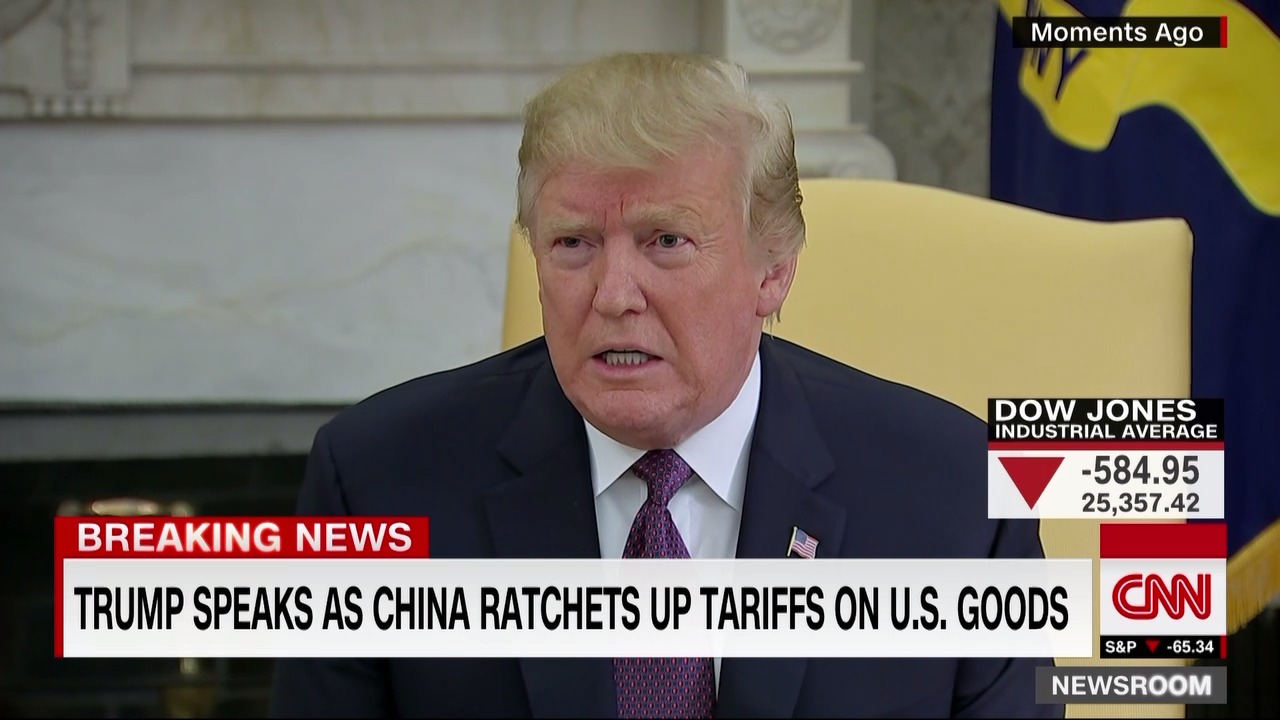US Tariffs Cast Shadow Over Asia Summit Amidst Growing China Ties

Table of Contents
The Impact of US Tariffs on Regional Trade
US tariffs on various goods, implemented under the guise of national security and trade imbalances, have significantly affected Asian economies. Key trading partners, including Japan, South Korea, and several Southeast Asian nations, have felt the brunt of these protectionist measures. The impact extends far beyond simple price increases.
-
Disruption of Supply Chains: Tariffs have forced businesses to re-evaluate their global supply chains, leading to increased costs and delays. Many companies, particularly those in the technology sector, rely on intricate networks across Asia, and the imposition of tariffs has disrupted these carefully constructed systems.
-
Increased Costs for Consumers: The added costs associated with tariffs are ultimately passed on to consumers in the form of higher prices for goods ranging from electronics to agricultural products. This has a significant impact on household budgets and overall consumer spending.
-
Retaliatory Tariffs from Asian Nations: Several Asian countries have responded to US tariffs by imposing their own retaliatory tariffs, escalating the trade conflict and further disrupting global commerce. This tit-for-tat response only serves to deepen the economic uncertainty.
-
Impact on Specific Industries: The technology and agricultural sectors have been particularly hard hit. For instance, tariffs on semiconductor components have increased production costs for electronics manufacturers, while tariffs on agricultural products have impacted farmers’ export opportunities. Data shows a significant decrease in export volumes for affected goods, leading to job losses and economic hardship in certain regions. For example, the 25% tariff on steel imports has significantly impacted the construction industry across many Asian countries.
Growing China Ties and Their Influence
Simultaneously, the economic relationships between China and other Asian nations are strengthening at an unprecedented pace. China's Belt and Road Initiative (BRI), a massive infrastructure development project, is significantly shaping the economic landscape of Asia.
-
Increased Investment from China in Infrastructure Projects (BRI): The BRI involves billions of dollars in investment in infrastructure projects across Asia, Africa, and Europe, fostering closer economic ties between China and participating nations. This increased investment fuels economic growth, but also raises concerns about debt sustainability and potential geopolitical influence.
-
Expansion of Trade Agreements between China and other Asian countries: China has actively pursued and signed various free trade agreements (FTAs) with Asian countries, creating more favorable trade conditions and deepening economic integration within the region. This represents an alternative trading bloc, potentially diminishing the impact of US trade policies.
-
China's Role in Regional Development Initiatives: China’s participation in and leadership in regional development initiatives, such as the Asian Infrastructure Investment Bank (AIIB), further solidifies its growing influence within Asia. This gives China greater leverage in shaping regional economic policies and infrastructure projects. This increased influence presents both opportunities and challenges for other nations within the region.
Navigating the US-China Trade War's Spillover Effects
The ongoing trade tensions between the US and China have cast a long shadow over the Asia summit, creating a climate of uncertainty and making it difficult to reach consensus on key issues.
-
Concerns about choosing sides between the US and China: Many Asian nations find themselves in a delicate position, needing to balance their relationships with both the US and China. Choosing sides could lead to significant economic repercussions, forcing them to navigate this complex geopolitical landscape with caution.
-
Difficulties in reaching consensus on regional trade agreements: The trade war has created a climate of mistrust and hindered efforts to reach consensus on regional trade agreements. The uncertainty surrounding US trade policies makes it challenging to negotiate and implement mutually beneficial trade deals.
-
Increased uncertainty about future economic policies: The unpredictable nature of US trade policies creates significant uncertainty for businesses operating in the region. This uncertainty discourages investment and hinders long-term economic planning.
The Search for Regional Stability Amidst Uncertainty
Despite the challenges posed by US tariffs and the changing geopolitical landscape, Asian nations are actively seeking ways to maintain regional stability and foster economic growth.
-
Initiatives to promote multilateralism and free trade: Several initiatives are underway to strengthen multilateral cooperation and promote free trade among Asian countries. These efforts aim to mitigate the negative impacts of protectionist measures and foster a more open and integrated regional economy.
-
Focus on regional cooperation and economic integration: There’s a growing focus on regional cooperation and economic integration, including initiatives to streamline trade processes, reduce non-tariff barriers, and enhance infrastructure connectivity. This emphasizes the importance of internal cooperation as a means to combat external trade pressures.
-
Statements from summit leaders addressing the concerns: Statements from summit leaders, while acknowledging the challenges, highlighted the commitment to regional stability and cooperation. The summit provided a platform for dialogue and the exploration of solutions to address the current economic uncertainties. These statements underscore the desire to maintain a positive economic trajectory despite external pressures.
The Long Shadow of US Tariffs and the Path Forward
The Asia summit clearly demonstrated the significant impact of US tariffs and the growing influence of China on regional stability and economic cooperation. Asian nations face the immense challenge of navigating this complex geopolitical landscape, balancing their relationships with major global powers while prioritizing their own economic interests. The future will likely involve increased regional cooperation, diversification of trade partners, and a continued search for diplomatic solutions to address the ongoing trade tensions. To understand the future implications for Asian economies, it is crucial to stay informed about the evolving situation regarding US trade policies and their impact on Asia. Further research into the impact of US tariffs, the effects of retaliatory measures, and the long-term consequences of the US-China trade war is highly recommended. Keep abreast of developments in US trade policies and their effects on Asia trade relations for a complete understanding of this evolving situation.

Featured Posts
-
 Funn Festival 2024 As Principais Atracoes Do Pop Feminino
May 27, 2025
Funn Festival 2024 As Principais Atracoes Do Pop Feminino
May 27, 2025 -
 Dylan Efron Saves Drowning Women In Miami Details Of The Rescue
May 27, 2025
Dylan Efron Saves Drowning Women In Miami Details Of The Rescue
May 27, 2025 -
 2025 Icon Award Janet Jackson Honored For Her Enduring Impact
May 27, 2025
2025 Icon Award Janet Jackson Honored For Her Enduring Impact
May 27, 2025 -
 Navigating Georgias Hemp Laws Current Legal Products And Regulations
May 27, 2025
Navigating Georgias Hemp Laws Current Legal Products And Regulations
May 27, 2025 -
 Kai Cenat Twitch Ban Account Hacked Images Altered
May 27, 2025
Kai Cenat Twitch Ban Account Hacked Images Altered
May 27, 2025
